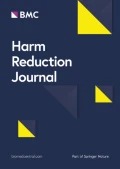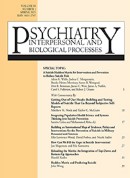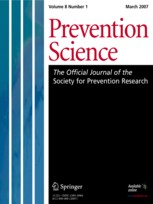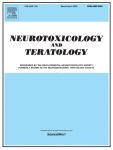New Publications from ADAI: Contingency management, the fentanyl epidemic, suicide prevention for Native youth, Permanent Supportive Housing, Prenatal alcohol exposure
05/09/2025Check out the latest publications from ADAI faculty:

Centering peers in design and training for a peer-delivered contingency management program for self-identified harm reduction and treatment goals.
Peng L, Stack E, Cooke A, Hartzler B, et al.
Harm Reduction Journal 2025;22(suppl 1):72.
This study tested a new way to help people who use stimulants get support and treatment: a contingency management (CM) intervention delivered by trained peers. The program was designed with input from these peers, who helped select the goals and rewards. After training, all 47 peers were able to use the program skills correctly, showing this method could be a helpful way to support recovery.

Adapting to the fentanyl epidemic: Rapid qualitative observations and derived clinical and research implications from the Emergency Department Longitudinal Integrated Care (ED-LINC) randomized clinical trial.
Lovett K, Zatzick D, … Banta-Green CJ, Whiteside LK.
Psychiatry 2025 (in press).
This study looked at how the rise of fentanyl use affected a program (ED-LINC: Emergency Department Longitudinal Integrated Care) designed to help people with opioid addiction in the emergency room. Researchers observed patients and found that fentanyl created new challenges, like higher suicide risk and difficulty staying engaged in care. Because of this, they updated the program to better meet patients’ needs, including overdose prevention and flexible treatment options. The study shows how healthcare programs must adapt quickly to keep up with changes in the opioid crisis.

Healing of the Canoe: Preliminary suicide prevention outcomes among participating and non-participating youth.
Perkins T, Lee B, Mackin J, Donovan D, et al.
Prevention Science 2025 (in press).
This study looked at how a culturally based program called Healing of the Canoe (HOC) affected Native youth, especially after adding suicide prevention lessons. Youth who took part in the program showed more hope and resilience, while a similar group who didn’t join the program saw drops in those areas. Mental health also slightly improved for the HOC group but got worse for the comparison group. Though the study was small, the results suggest that programs like HOC can help support Native youth’s mental well-being.

Perceptions of Substance Use in Permanent Supportive Housing: Results from the 2024 State PerCH Staff Survey.
Petersky S, Banta-Green CJ.
Seattle, WA: Addictions, Drug & Alcohol Institute, Department of Psychiatry & Behavioral Sciences, School of Medicine, University of Washington, September 2024.
This report describes findings from a survey of 28 staff members about their perceptions of substance use among residents and staff’s approaches to substance use in their buildings. Read more about other outcomes from the 2024 WA State Permanent Support Housing Survey of Residents and Staff here.

Substance use and mental health symptoms in adults with prenatal alcohol exposure.
Hunnicut-Ferguson K, Stoner SA, Kable JA, Grant TM, Coles CD.
Neurotoxicology and Teratology 2025 (in press).
This study looked at how people with prenatal alcohol exposure (PAE) use substances and experience mental health issues in midlife. Adults with PAE had higher rates of tobacco and cannabis use, and more childhood trauma, compared to those without PAE. Alcohol use was linked to symptoms of depression and PTSD, especially in people with both PAE and childhood trauma. The results show that PAE can affect mental health and substance use long-term, and more research is needed to support this group as they age.





